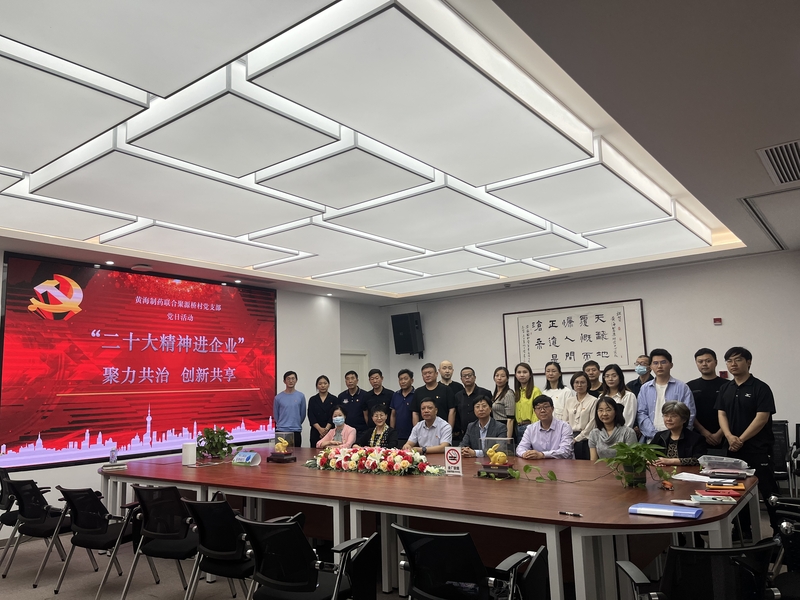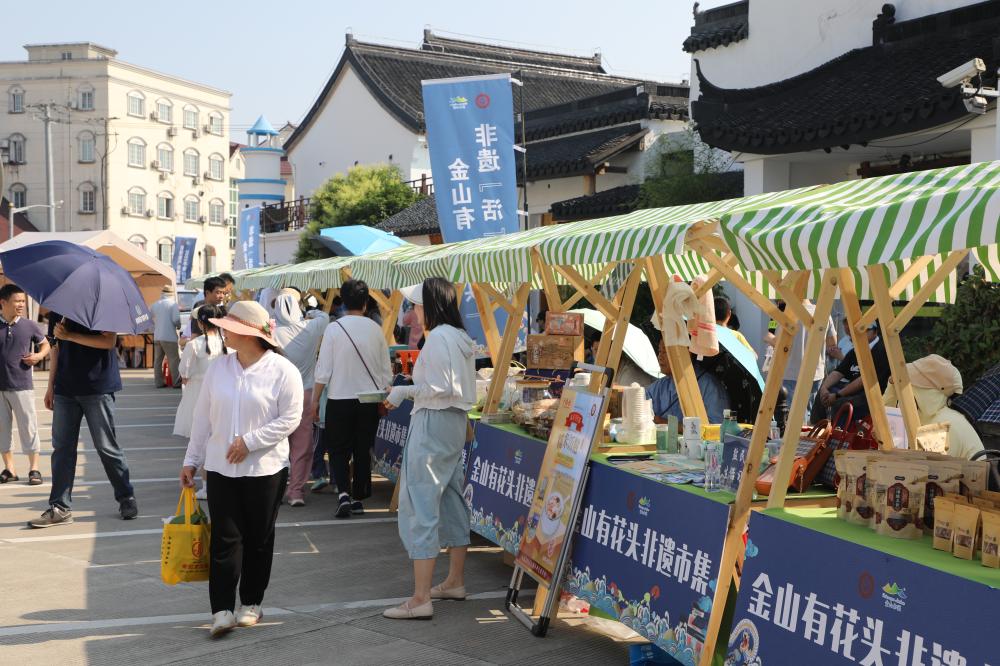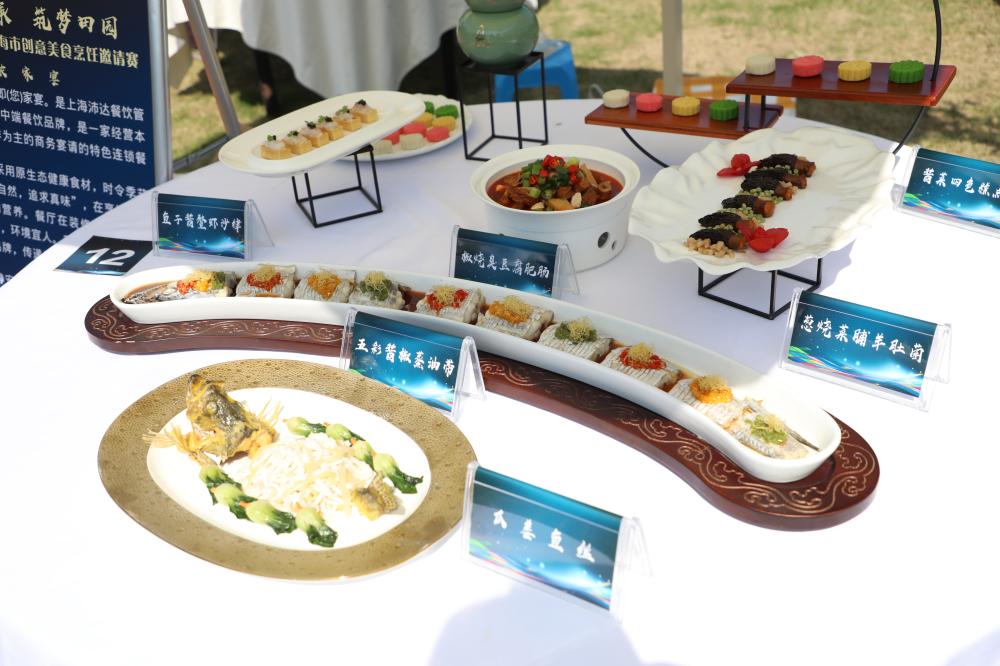Taking a taxi, taking a bus, riding a bicycle or walking are all difficult...Shanghai Dahongqiao solves the "awkward last two kilometers"
She lives in Xinzhuang, and her company is in Hongqiao Pinhui. Xiao Zhang, a post-90s girl, goes to work every day like a war. There is no room for "missing the chain" in any link: starting at 8:00, taking bus No. 189, 1 hour and 15 minutes on the road, and getting off the bus If you walk for less than 10 minutes, you can basically arrive at work before 9:30.
Recently, she discovered that two shared bicycle parking spots have been added near the company, so her commuting route has flexible options: she can take Hongqiao Hub No. 4 with more frequent trips. After arriving at Hongqiao Hub, it is still more than 2 kilometers away from the company. Riding a shared bicycle for 10 minutes can also ensure that you are not late for work.
At present, there are 50,000 white-collar workers in Hongqiao International Central Business District, and the average daily passenger flow of Hongqiao Transportation Hub is 400,000-500,000. However, while the external "major transportation" is smooth, its internal "microcirculation" suffers from capillary stasis. Blocking problem. People who work and live in Hongqiao have more or less encountered the "embarrassment of the last two kilometers."
In the core area of the 3-square-kilometer business district, the airport, train station, and subway station are a central radiation point. The surrounding business buildings and residential areas are about 2 kilometers away. However, whether people in the business buildings want to go to the airport or train Whether you are on a business trip or walking from the subway station to a business building or residential area, the long and short journey always gives you a headache.
It seems that there are many options such as taking a taxi, taking the bus, riding a bicycle, walking, etc., but in fact, each option is very difficult to operate.
If you take a taxi from Hongqiao Station, you usually have to queue for half an hour. Because the distance is too close, the driver will complain. For office workers, it is difficult to get a taxi during the morning and evening rush hours.
Some people say that it is better to walk for 20-30 minutes, but if you are in a hurry or encounter a hot or rainy day, it will be very troublesome.
Taking the bus, it takes time to wait for the bus, and you often have to walk at both ends, which sometimes takes longer than just walking.
Riding a shared bicycle takes about 10 minutes. Is it the most flexible and convenient? No, "few vehicles" and "difficult to park" are the two major complaints. In the first quarter of last year, the number of 12,345 complaints in this regard reached 113.
However, after a comprehensive analysis of several options, cycling is the best choice and the easiest solution. It is understood that since this year, Xinhong Street in Minhang District has added 13 new standardized parking spots for shared bicycles in its jurisdiction, forming a total of 57 standardized parking spots for shared bicycles, and has fully implemented all 378 commercial buildings in 29 plots in the business district. coverage, each building can find its own parking spot within 200 meters. According to monitoring, currently, the average daily volume of shared bicycles in Hongqiao Business District is 1,800-2,000 units, which in theory can basically meet the needs of cycling.
So, how do white-collar workers, residents, and business travelers feel about this? Do they really find it convenient? Why can't Greater Hongqiao be like Xinzhuang and other transportation hubs, so that people can see shared bicycles anytime and anywhere and easily find parking spots? How were the new parking spots added this year? The reporter conducted an on-site visit.
Map of newly added shared bicycle parking spots in Hongqiao International Central Business District.
At around three o'clock in the afternoon, Ms. Huang got off the bus at the Shenhong Road and Huaihong Road bus station on No. 1 Road in Hongqiao Business District. She saw a row of shared bicycles parked on the roadside and immediately stepped forward to scan the QR code.
"There are still one or two kilometers away from the company. Walking is too slow. It only takes a few minutes to ride back." Ms. Huang told reporters that she lives in Zhaoxiang Town, Qingpu District. She rides a shared bicycle on Metro Line 17 to work every day and rides from the subway entrance. It takes about 10 minutes to get to the company, "riding a shared bicycle is the most flexible and convenient way."
This parking spot was recently added and mainly serves the office crowd of Hongqiao Jiahui Plaza next to it. It is understood that there are many service points in Yangtze River Delta cities in this plot, and staff often travel between Yangtze River Delta cities and Greater Hongqiao. Previously, it was difficult to experience the 1.8-kilometer journey from Hongqiao Jiahui to the train station. "It looks like the journey is not far. It takes more than 20 minutes to walk. At this time, you can already take the high-speed train from Shanghai Hongqiao Station to Suzhou North Station."
A large number of recently added shared bicycle parking spots have filled the gaps in various directions in the Hongqiao business district, giving white-collar workers, residents and tourists flexible and convenient travel options.
"In the past, there were very few shared bicycles near the community. We could only walk to the subway station or squeeze into the bus." Xiao Wang, who lives in Aibo Village No. 2, said, "I have to take the subway to and from home and work every day. The journey from the subway station to my home is It takes more than 20 minutes to walk, and the waiting time depends on taking the bus. Now, there are several shared bicycle spots in the Aibo area, making it much more convenient to go to the subway station and surrounding shopping malls.”
In fact, before 2018, non-motorized vehicles were still "relaxed" on both sides of the roads around the Hongqiao hub. At that time, there were tens of thousands of non-motorized vehicles parked on the ground in the business district every day. From an elevated perspective, they were all full of cars. , the phenomenon of random parking is rampant, and even "blocking" sidewalks and motor vehicle lanes, causing trouble to pedestrians, drivers, and cyclists, and seriously affecting the image of the city.
On the eve of the first CIIE, this chaos was completely rectified. There were no longer cluttered non-motorized vehicles on both sides of the roads in the core area, and the city became more tidy and clean.
"At the end of 2020, as the number of white-collar workers from companies settled in the business district increased, it became difficult to find shared bicycles in the core area." The relevant person in charge of Xinhong Street said frankly that due to the particularity of the Hongqiao business district and the impact of the CIIE on surrounding areas Due to the high environmental requirements, both sides of the road in the core area are designated as non-motor vehicle parking areas, and shared bicycle parking spots cannot be set up. Coupled with "congenital deficiencies", there are no temporary social non-motor vehicle parking garages planned in advance around the Hongqiao hub. Therefore, it caused great inconvenience to the people in the "last two kilometers".
In the past two years, Xinhong Subdistrict has tried every means to gradually turn the original "non-motor vehicle no-parking area" into a "non-motor vehicle standard parking area." "The 13 newly added points are not only located on the south side of P10 of Hongqiao Railway Station, the northwest side of Shenhong Road and Shaohong Road, inside the Hongqiao Jiahui Building, next to the public toilets on Shenbin South Road, next to the public toilets on Suhong Road, etc., they are also distributed in Aibojiayuan’s bus stations, talent apartments, schools and other areas are nearby,” said the person in charge of the street.
The reporter visited multiple parking spots and found that several of the newly opened spots are not located on both sides of the roads in the core area, but are placed in back streets and alleys and within the red lines of building plots. Because the locations are relatively remote, knowing The utilization rate is also low. Therefore, the utilization rate of some parking spots is currently not high. Further publicity and guidance will be needed in the future.
In addition to the difficulty in setting up parking spots, operators also have concerns. As the main partner of Xinhong Street in the field of shared bicycles, Mao Weijia, head of the Government Affairs Department of Hello Bicycle, told reporters that the application scenarios in the business district are not rich and have obvious tidal characteristics, mainly concentrated in the morning and evening peak hours. At present, about 1,800 shared bicycles are launched every day, and the average "turnover rate" is 2.19, which is not high, and it is difficult to make a profit for a while. You know, the average "table turnover rate" in Minhang District is 4-5, and the "table turnover rate" in some areas in the city center is as high as 7.
It is necessary to keep the city environment clean and tidy, prohibit parking of non-motorized vehicles on both sides of the road, and at the same time make it as convenient as possible for people to travel so that people can find shared bicycles and parking spots in the nearest place - where is the best solution for both?
Hierarchical and classified management to keep vehicles in their proper places is a clever trick. The reporter learned that Xinhong Subdistrict divides non-motorized vehicles into four types according to their attributes: shared bicycles, social vehicles, takeout vehicles and building vehicles, and sets up different parking spots for hierarchical and classified management. Up to now, a total of 57 standardized parking spots for shared bicycles, 19 temporary parking spots for Tide takeaway non-motorized vehicles, and 73 social parking spots for non-motorized vehicles have been set up in the area, forming a tripartite co-governance of "government-enterprise-citizens" A new pattern of non-motor vehicle management.
The non-motor vehicle parking needs of building employees are encouraged to be digested and solved by each block on their own, rather than pushed out wholesale. In order to ensure that vehicles can enter the building and park without occupying social vehicle parking resources, the street guides each building plot to issue parking ID tags worth about 3,200 yuan to the owners of the building vehicles.
The 57 shared bicycle parking spots mainly rely on the discussion platform of grid governance led by party building, and actively "offer land" from each building plot through negotiation. Up to now, 29 building plots in the business district have provided a total of 40 parking spots within the planned red lines, ensuring full coverage of parking spots in each building plot. At the same time, a joint disposal mechanism is established to make it clear that parking spots within the red line are the responsibility of each unit, and spots outside the red line are responsible for daily management by the street.
Zhang Yuan, customer service manager of Noah Wealth Center, told reporters that the company is currently renovating thousands of square meters of small gardens in the plot, which is expected to be completed by the end of June, with three to four hundred square meters reserved for non-motor vehicle parking. point, 200-300 non-motorized vehicles will be able to be parked. In the past, only 20-30 non-motorized vehicles could be temporarily parked here, and demand exceeded supply. Enterprises "provide land, money and efforts" and participate in the business district's "co-discussion, co-construction, co-governance and sharing".
At the same time, parking spots for takeaway vehicles are set up in a tidal manner. In order to make it easier for takeaway guys to pick up and deliver food, the street has set up a total of 19 temporary parking spots for takeout vehicles during peak dining hours around Hongqiao Tiandi, Longhu Tianjie, Libao Plaza and other commercial buildings. The parking period is 11:00-14: 00 and 17:00-20:00, basically meeting the parking needs of takeaway vehicles.
The demand for social vehicle parking is a big one, and it also supplements the first three scenarios. In order to facilitate people to park non-motorized vehicles around train stations, bus stations, banks, hospitals, schools, and shopping malls, the streets on the one hand find ways to increase parking spots around the hub and in the core area, and on the other hand rely on the party building platform of the hub to be friendly with each building plot. Negotiations have been made to add parking spots. Currently, a total of 73 public vehicle parking spots have been set up, which basically meets the needs.
Among them, it is particularly worth mentioning that since this year, Xinhong Subdistrict has tried every means to add a comprehensive parking spot for shared bicycles and social vehicles in the north and south squares of the train station. It is expected to be able to accommodate 1,000 non-motor vehicles, making it convenient for people to arrive and leave Hongqiao. TRAIN STATION. "You can find shared bicycles within a five-minute walk from the north, west, and south directions of the train station," said the person in charge of Xinhong Street.
Although it is difficult to achieve profitability for the time being, for shared bicycle operating companies, the "window demonstration" and "brand promotion" effects of Dahongqiao are worth cherishing. Therefore, bicycle companies are actively increasing investment and constantly optimizing the experience of cyclists. Nowadays, in the Hello Bike riding software, in addition to showing where there are vehicles, each parking spot is also marked one by one, making it easier for people to find and return bikes. The company also guides cyclists to regulate parking by issuing small rewards and punishments such as issuing riding coupons and collecting dispatch fees.
At the same time, Xinhong Street also relies on the unified management of "non-motor vehicle management" application scenarios through one network to visually display the number, address and other information of various parking spots, conduct real-time monitoring and supervision of shared bicycles, and automatically warn of vehicle saturation at shared bicycle parking spots. And generate work orders and push them to the bicycle company for prompt processing, dynamically optimize the investment distribution of vehicles, and use digital means to help solve the problem of shared bicycle management.
According to statistics, currently, the standard parking rate for shared bicycles in Hongqiao Business District remains at around 90%, which is much higher than the 50%-60% in other areas. In the first quarter of this year, the number of 12,345 complaints related to non-motor vehicle parking management in Xinhong Street dropped by more than 60% compared with the same period last year.
"Everything develops in contradictions. Everything is slowly getting better." Cao Bo, chief operating officer of Shanghai Taiye Technology Co., Ltd., told reporters that his home and company are both in the Hongqiao Business District, and he has witnessed it with his own eyes in the past two years. We have witnessed that Dahongqiao is getting better and better in all aspects. In addition to the issue of shared bicycles, with the opening of the west extension of Route 71, as many roads in the area have been changed to one-way streets, as the relevant parties have responded to the "vehicles, roads and people" "With the implementation of comprehensive policies, the stubborn problem of "congestion" in Dahongqiao has now been significantly alleviated.






